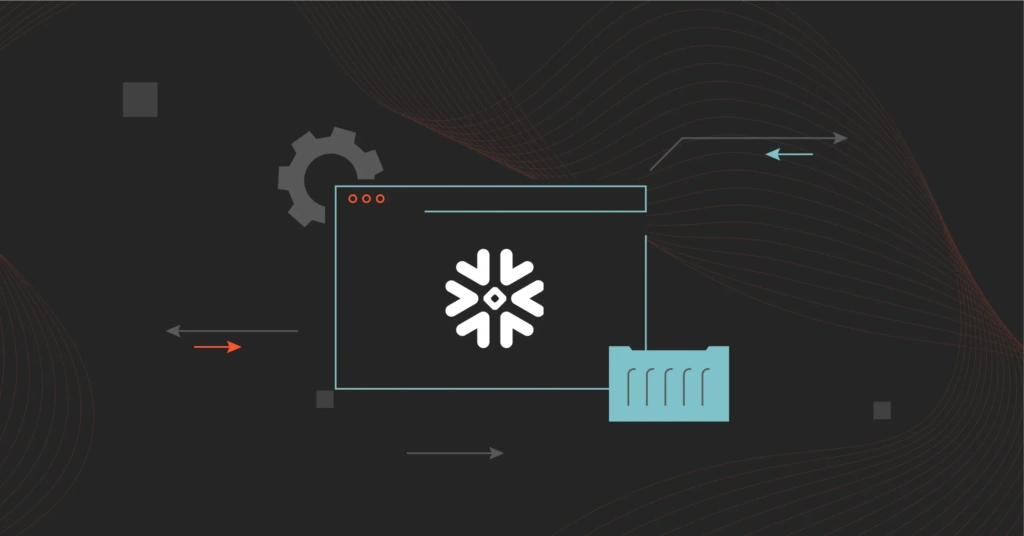The Snowflake data cloud provides storage, reporting, and analytics for organizations that rely on data to run their day-to-day operations. Since its launch from stealth mode in 2014, Snowflake has become a top data warehouse solution for its manageability, superior scalability, always-on data security, advanced analytics, and robust accessibility.
But Snowflake isn’t perfect. For example, Snowflake is a cloud-only solution, so it might not be the best choice for organizations with on-premises data. Snowflake data storage costs can also spiral out of control if you’re not careful.
The usual alternatives to Snowflake are Amazon Redshift, Microsoft SQL Server, Azure Synapse Analytics, and Google’s BigQuery. Alternatively, if you are looking for other cloud data platforms similar to Snowflake, here are seven to consider.
1. Snowflake with CloudZero cloud cost intelligence
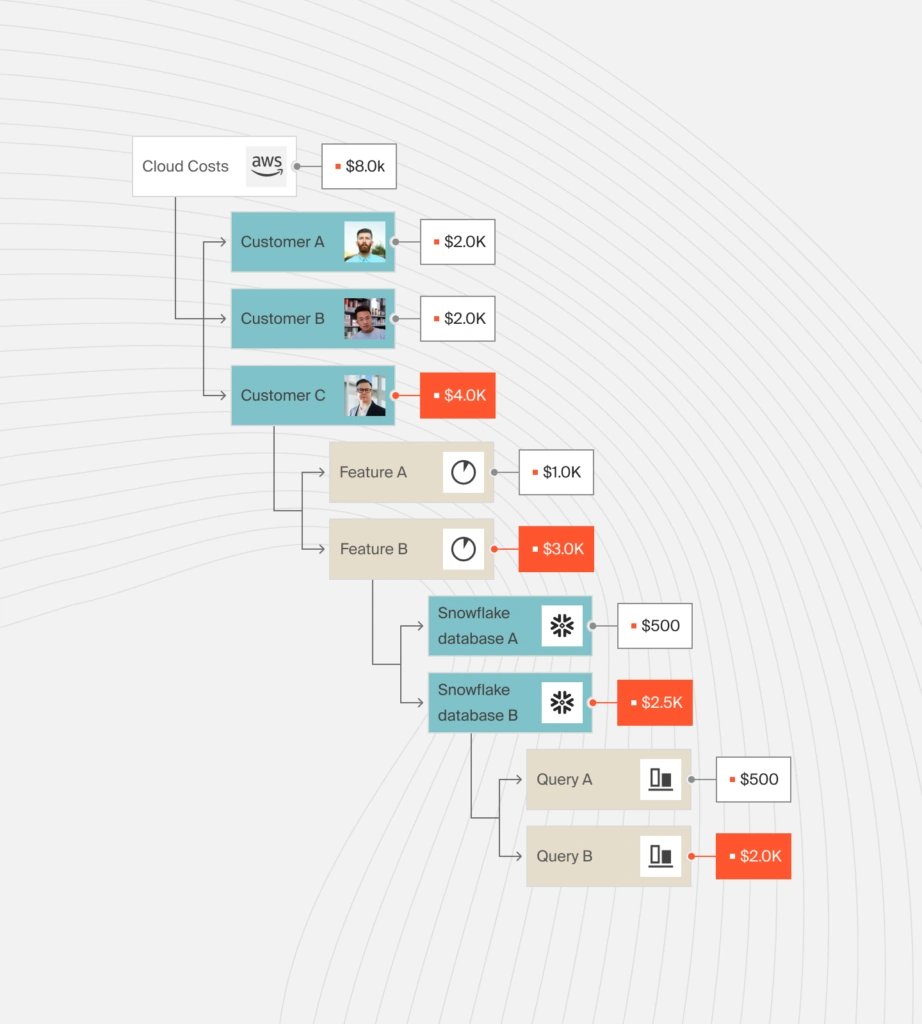
Founded: 2016
Pricing: Custom to your environment — NOT a percentage of your cloud spend
Best for: Businesses looking to improve their visibility into Snowflake costs
This is an ideal combination when you know Snowflake is the perfect cloud data solution for your needs but are struggling to increase visibility into your Snowflake costs.
With CloudZero’s Snowflake Cost Intelligence, you can access cost insights from both AWS and Snowflake on one platform. Even better, you can break down these costs into granular insights like cost per feature, cost per team, cost per project, cost of goods sold (COGS), etc.
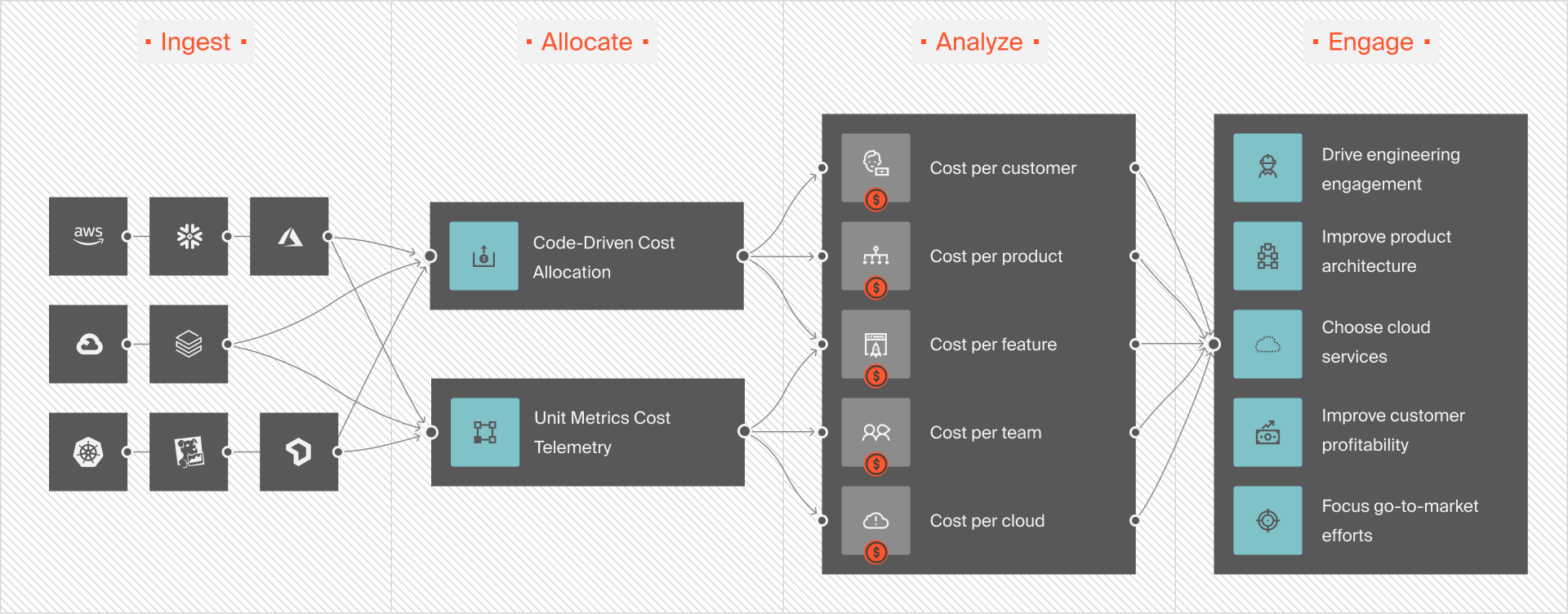
Both CloudZero and Snowflake run entirely on cloud infrastructure, making them perfect for cloud-native cost intelligence. You can also connect to the CloudZero platform within minutes and generate value immediately.
Moreover, you’ll receive a Cloud Cost Analyst, an experienced FinOps professional, to help you optimize Snowflake costs from the beginning.
With CloudZero’s real-time cost anomaly detection, you’ll also know when you’re about to go over your Snowflake budget to avoid overspending.
Interested in testing CloudZero for your use case? 
2. Panoply – Managed ELT and cloud data warehouse
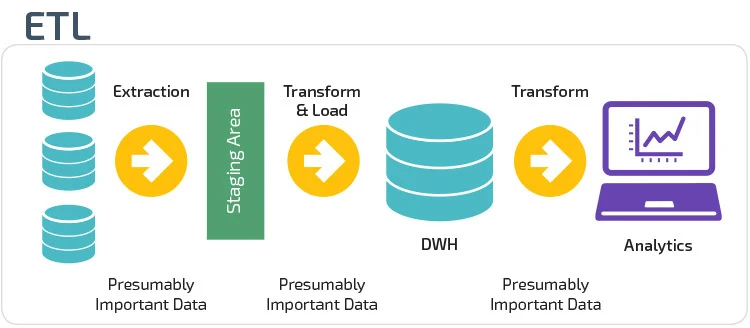
Founded: 2015
Pricing: 60-day proof of value trial free. Annual plans start at $639 or $699 monthly.
Best for: Organizations seeking a data warehouse with integrated ETF features
Panoply is a smart, secure cloud data platform and a managed, no-code ETL (extract, transform, load) tool. Its ready-to-use ETL integrations seamlessly connect with dozens of data sources.
The platform automatically detects your data type, scales hands-free, has a monitoring system, and offers pre-built SQL queries. You can then query your data directly in the Panoply platform, your BI, or your favorite analytical notebook.
3. IBM Db2 – Hybrid cloud data warehouse compatible with Netezza and Oracle
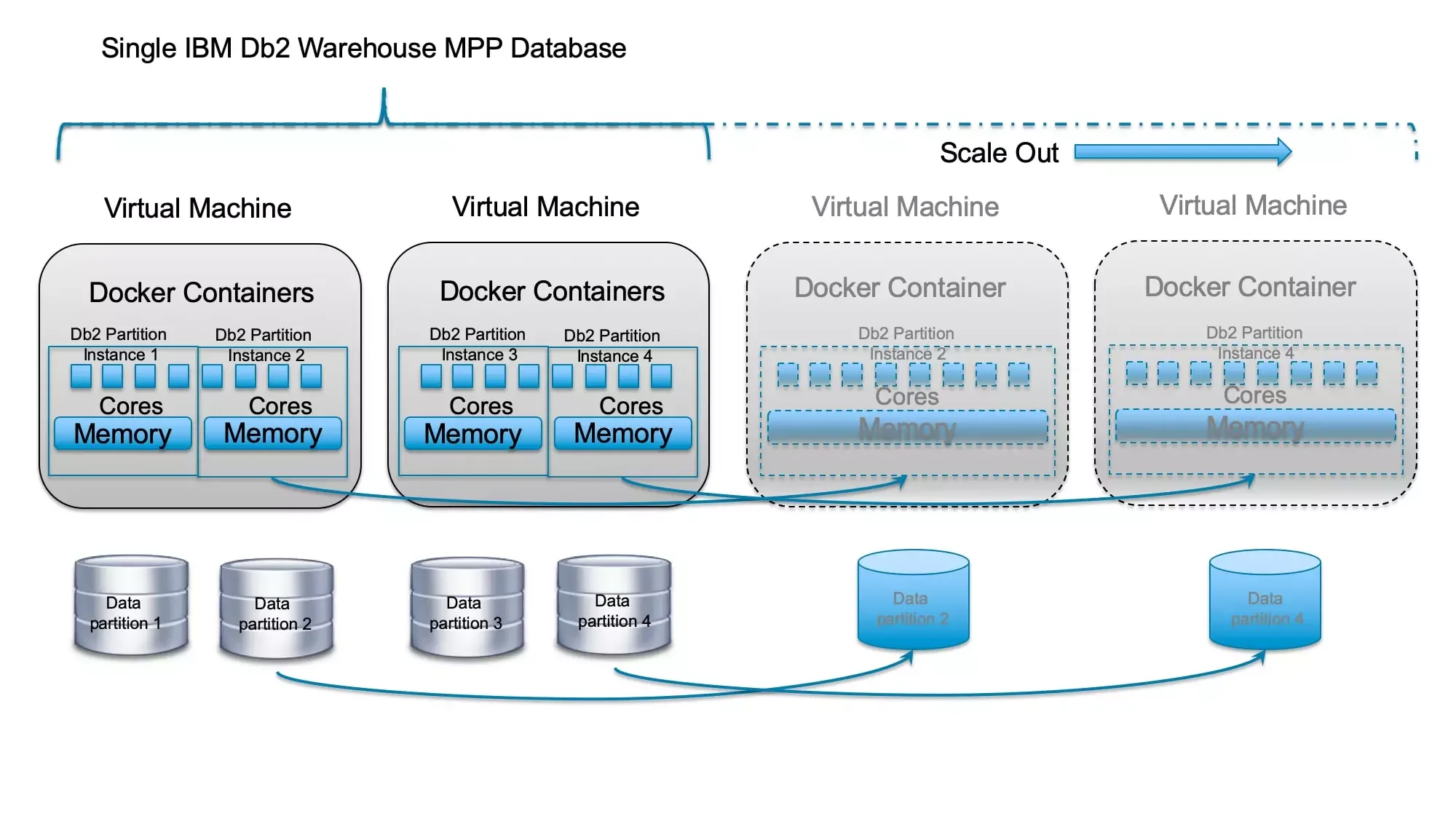
Founded: 1983
Pricing: Various plan options
Best for: Organizations of different sizes seeking a hybrid cloud data platform for processing and in-database analytics
Thanks to its MPP architecture, IBM Db2 provides enterprises with an extensible, high-performance data warehouse solution. The product also uses BLU technology for processing and supports in-database analytics.
Yet Db2 is relatively easy to deploy and operate. It’s also an excellent option for organizations that prefer to keep data on-premises for privacy purposes while combining the benefits of public and private cloud services.
Db2 is suited for companies of all sizes due to its scalability, from running it on a laptop during development to extensive cloud infrastructure in the public cloud.
4. Cloudera – Hadoop-based hybrid cloud data system

Founded: 2008
Pricing: Hourly rate per CCU (depends on use case)
Best for: Companies looking for a hybrid cloud alternative to Snowflake
With Cloudera, you get a Hadoop-based and real-time cloud data storage, processing, and analytics platform and a management system for all phases of your enterprise data lifecycle. You can use it on all public clouds, your data center, or your private cloud.
Cloudera’s management areas include migration, security, metadata, and compliance. The platform is also built on an open-source platform that supports multiple data stores and is scalable.
5. Databricks – Combine data lake and data warehouse capabilities in one platform
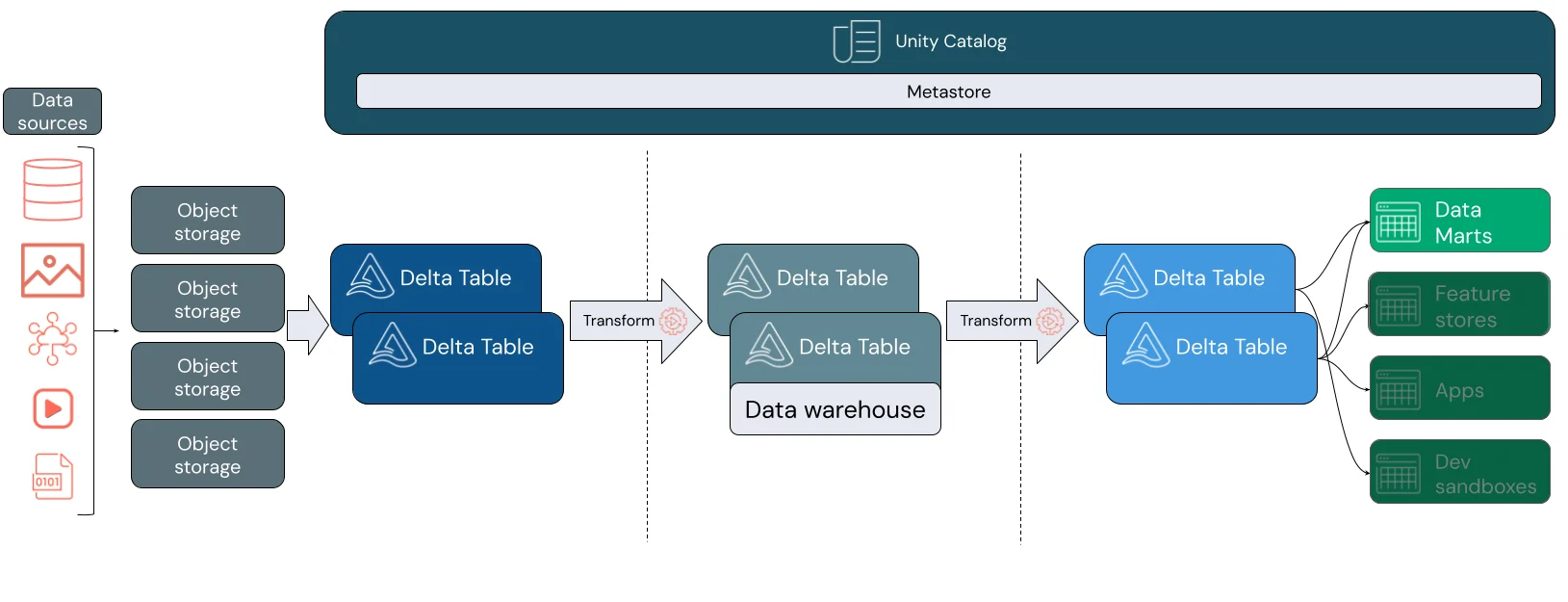
Founded: 2013
Pricing: 14-day free trial. Pay-as-you-go model
Best for: Companies looking to consolidate all their data, analytics, and AI workloads across a variety of public clouds
The Databricks data analytics platform is based on Apache Spark Technology. The people who built Apache Spark, MLFlow, and Delta Lake also developed Databricks.
The platform combines data lakes and data warehouse functionality into one package. It is also built on an open-source foundation, which allows it to support most types of data, AI functionalities, and analytics.
If you are an Azure customer, Databricks, in partnership with Microsoft Azure (Azure Databricks), delivers three environments: Databricks Data Science and Engineering, Databricks SQL, and Databricks Machine Learning. However, it also supports workloads in AWS and Alibaba public clouds.
6. PostgreSQL – Open-source Snowflake alternative for enterprises
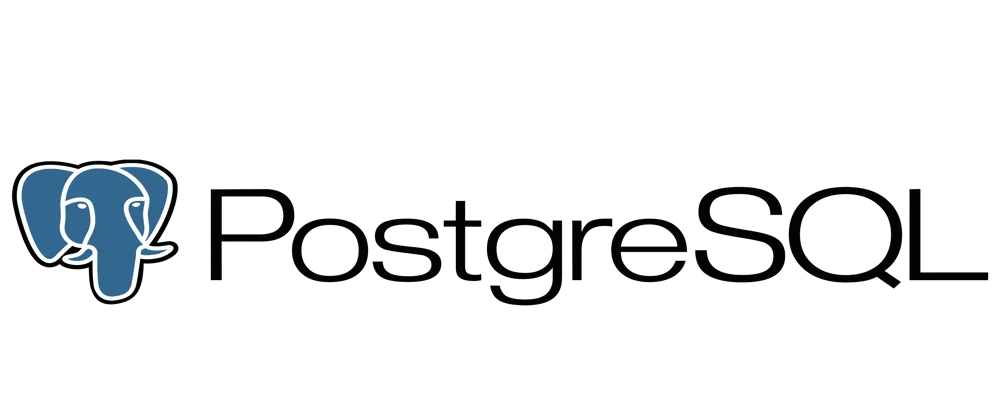
Founded: 1986
Pricing: Free
Best for: Organizations with experienced data engineers who want to reduce cloud costs by using a robust open-source platform
Consider PostgreSQL if you are a large organization looking for an open-source object-relational database platform. It has a stellar reputation for its extensive and supportive community, reliable performance, solid stability, and robust access control system.
PostgreSQL supports many data types, from structured and document (JSON, XML, etc.) to custom types and primitives (numeric, integer, etc.). However, PostgreSQL requires a separate ETL tool to push data into storage.
7. Dremio Cloud – Free and open-source data lake platform
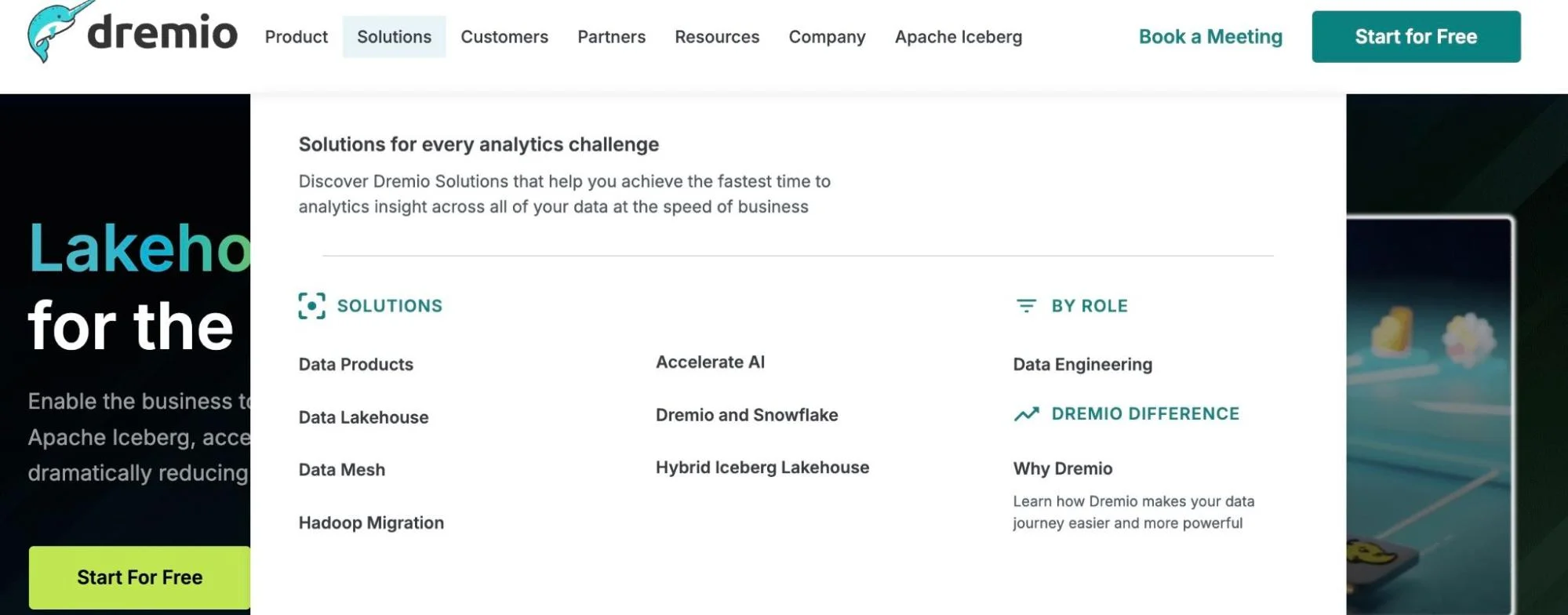
Founded: 2015
Pricing: Free for Standard Plan. $0.39.DCU for Enterprise Edition
Best for: Data engineers and analysts who love SQL and want to query their lakehouse in production
Dremio is another alternative to Snowflake for organizations, showcasing a data lakehouse platform built for SQL and based on open-source technologies.
With Dremio, you can use BI dashboards and interactive analytics directly on your data lake. Like Databricks, Dremio enables you to combine data lake and data warehouse functionality to ensure you don’t lose insights from your data.
It also offers an enterprise edition platform with end-to-end security and compliance management features. The edition provides Dremio Sonar (an SQL engine powered by Apache Arrow that includes data warehouse functionality on Amazon S3 object storage) and Dremio Arctic (a data and metadata management service for Apache Iceberg).
Honorable mentions: Presto, Teradata, Druid, Exasol.
Is Snowflake The Best Cloud Data Platform For You?
With CloudZero’s Snowflake Cost Intelligence, you can map costs directly to architectural and technical engineering decisions. This means you can identify exactly which products and features contribute to your total cloud spending.
With granular details like cost per customer, team, project, etc, you’ll have the unit cost insight to pinpoint where to optimize costs without sacrificing innovation.
If you run workloads in AWS, CloudZero also consolidates AWS and Snowflake cost insights into one platform. This can help you see the complete costs of running your software products.

